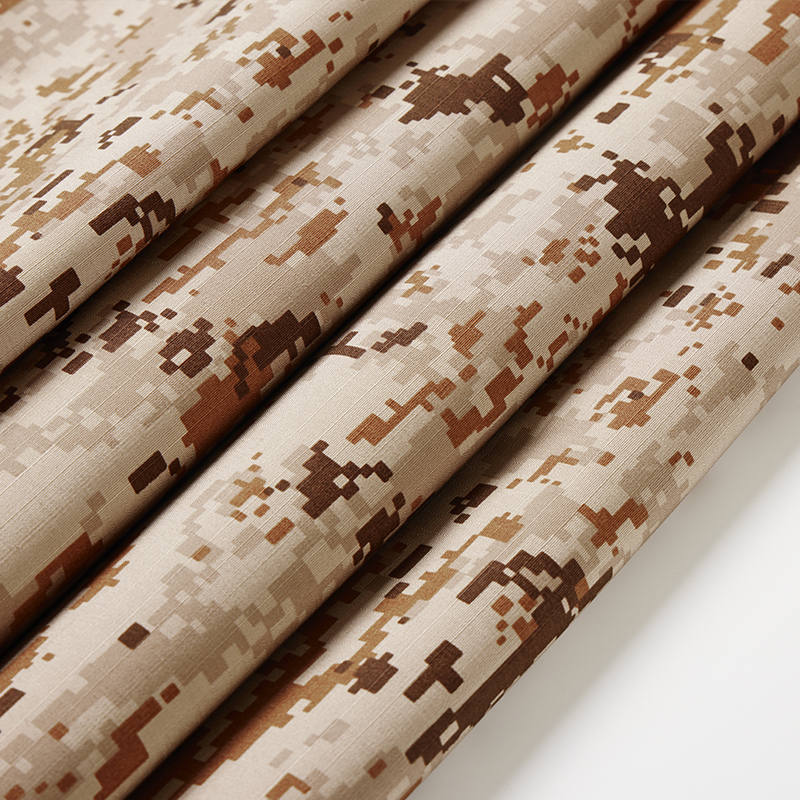What’s the Difference Between Pure Cotton and 100% Cotton Fabrics?
As a textile manufacturer with over 15 years of experience in producing high-quality fabrics, including uniform fabrics, workwear fabrics, camouflage fabrics, and pocket fabrics, we understand the importance of choosing the right material for your specific needs. Two terms that are often encountered in the textile industry are “Pure Cotton” and “100% Cotton Fabrics.” While these terms are sometimes used interchangeably, they have distinct meanings and implications in terms of fabric composition and performance. Let's dive deeper into the key differences from a professional textile perspective.
1. 100% Cotton Fabrics: The Purest Form of Cotton
When a fabric is labeled “100% Cotton,” it means that the fabric is made entirely from cotton fibers without the addition of any synthetic materials or other types of natural fibers. 100% Cotton Fabrics are the most natural form of cotton textiles and are highly valued for their breathability, softness, and comfort.
Key Features of 100% Cotton Fabrics:
Natural Composition: 100% Cotton Fabrics are made from cotton plants, providing all the inherent benefits of cotton, including excellent moisture absorption, breathability, and natural softness.
Softness and Comfort: One of the primary reasons 100% Cotton Fabrics are preferred for garments like t-shirts, shirts, and bedding is their gentle feel against the skin. These fabrics are naturally soft and comfortable for daily wear.
Eco-Friendly: As a natural fiber, cotton is biodegradable and renewable, making 100% Cotton Fabrics a more sustainable and environmentally friendly option compared to synthetic fibers.
Durability: While cotton is known for its softness, 100% Cotton Fabrics are also durable, especially when tightly woven. However, one consideration is that they may wrinkle more easily compared to fabrics with synthetic blends.
2. Pure Cotton Fabrics: A Broader Term
The term “Pure Cotton Fabrics” generally refers to fabrics that are predominantly made from cotton but may contain small amounts of other fibers, such as polyester or elastane, to enhance specific properties like elasticity or strength. Unlike 100% Cotton Fabrics, Pure Cotton Fabrics can be a blend, meaning they may not be entirely composed of cotton fibers.
Key Features of Pure Cotton Fabrics:
Mostly Cotton Content: Pure Cotton Fabrics are typically made from cotton fibers as the primary material, but they may contain a small percentage of other fibers, such as synthetic fibers, to improve performance. This small addition can make the fabric more versatile for specific applications.
Enhanced Performance: The blending of cotton with other fibers, such as polyester, can enhance the fabric’s durability, wrinkle resistance, or moisture-wicking properties. This makes Pure Cotton Fabrics ideal for items like uniforms, workwear, and activewear, where added strength or flexibility is needed.
Softness with Added Durability: While Pure Cotton Fabrics retain much of the natural softness of cotton, the addition of other fibers can also provide benefits like increased stretch or less frequent ironing.
The distinction between 100% Cotton Fabrics and Pure Cotton Fabrics is important for manufacturers and consumers alike. 100% Cotton Fabrics are entirely made from cotton and are prized for their comfort, softness, and eco-friendliness. On the other hand, Pure Cotton Fabrics may contain a small percentage of other fibers to enhance specific properties like durability, elasticity, or wrinkle resistance, making them suitable for a broader range of functional applications.
At BSCAM, we specialize in high-quality 100% cotton fabrics and Pure Cotton Fabrics for a variety of industries. Whether you need soft, breathable cotton fabrics for clothing or more durable, performance-enhanced fabrics for uniforms and workwear, we offer the right solutions to meet your needs.











